This is Why the Vatican Censored Michelangelo's David
Sin, sex and censorship
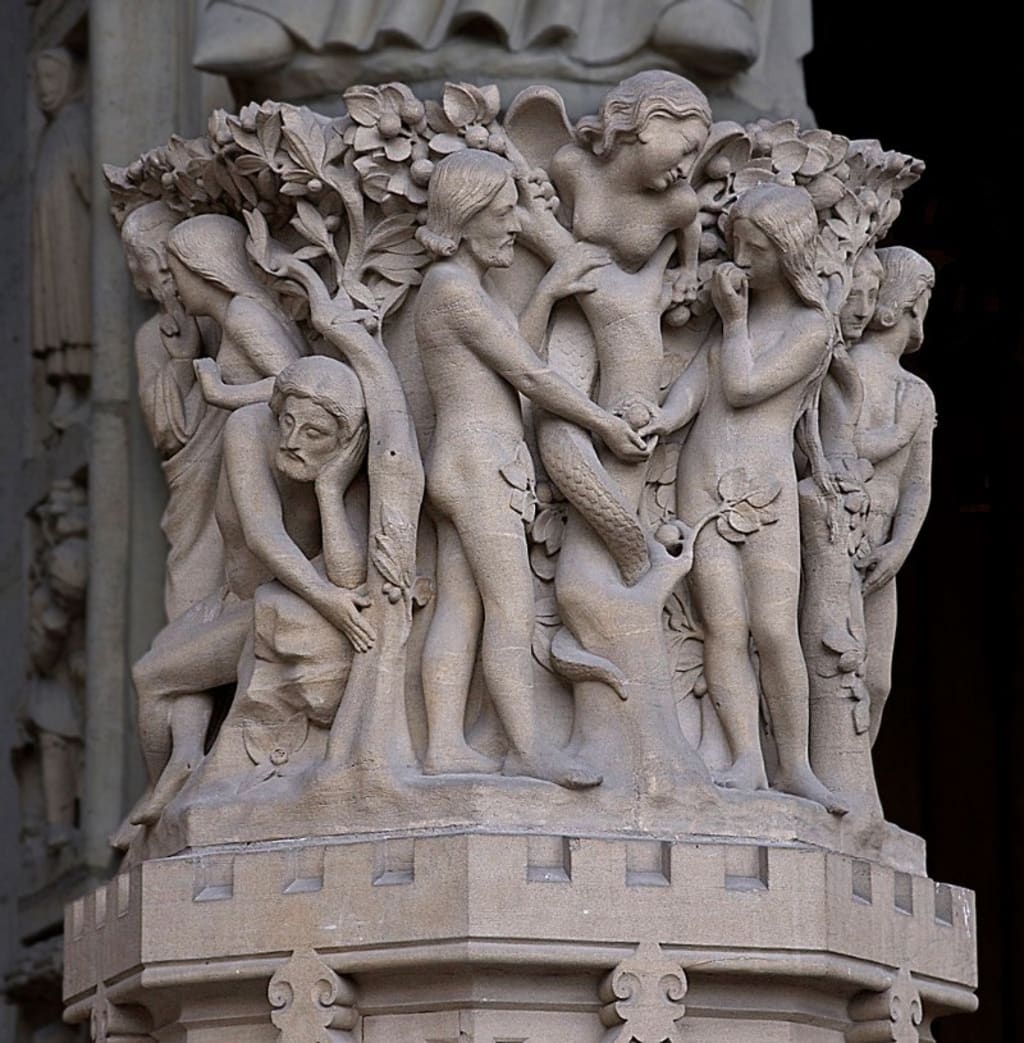
Have you been to Notre Dame? A medieval cathedral in Paris, completed mostly in the 13th century.
At the front entrance to Notre Dame, there is a depiction of 'the fall of man'. The dramatic moment at the garden of Eden where Eve eats the forbidden fruit and shares the fruit with Adam. Ashamed of their nakedness, both are expelled from the Garden of Eden.
We reach the climax of curiosity when we see their private parts are covered with a "plaster cast of fig leaves".
According to Genesis 3:7 -
"And the eyes of them both were opened and they knew that they were naked and they sewed fig leaves together and made themselves aprons."
As soon as Christianity seeped into the European land in the 1st century AD, this doctrine was literally adopted by the artisans and sculptures and etched on the stone. As we entered the medieval period, Catholic churches started viewing nudity as "obscene and a sin."
St. Augustine, the famous theologian and one of the Latin fathers of the Church believed that since eating the forbidden fruit, man lost control of his genitals and unwanted erection was apparently a sign of disobedience.
Thus, a fig leaf became synonymous with sin, sex, and censorship.
Fig leaf Campaign - the biggest coverup in history
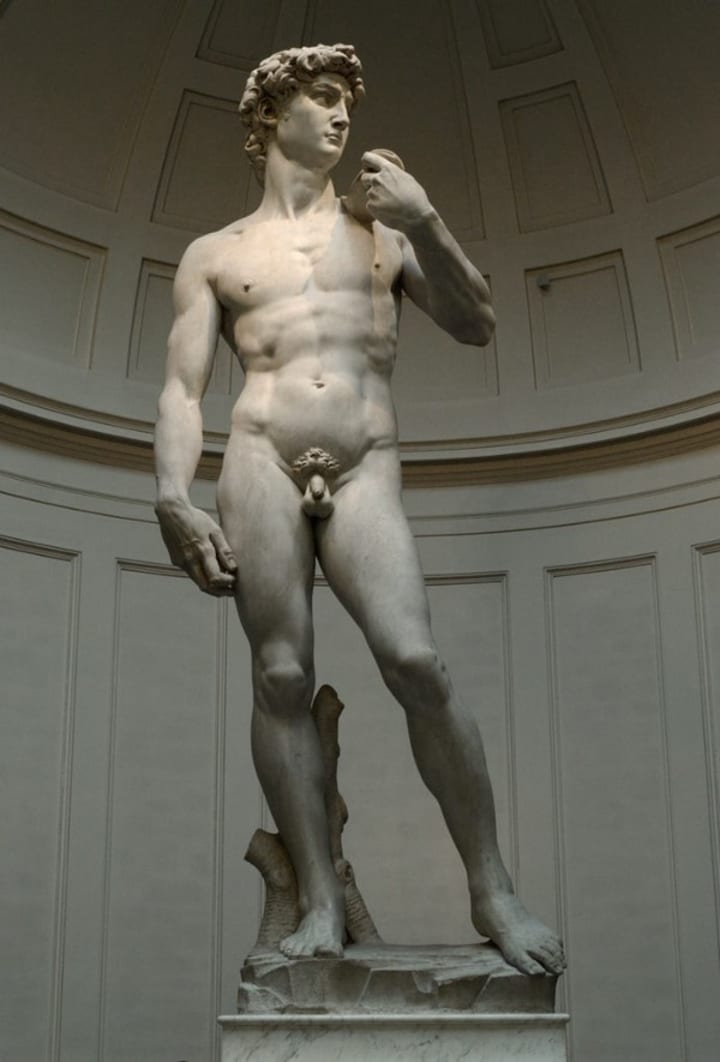
The Renisaance period led to the age of awareness.
There came a genius artist and sculptor who defied Christian beliefs and rekindled the birth of the ancient nude - Michelangelo.
Michelangelo's David is indeed the most perfect statue in the world. A nude proudly standing tall in the public place of Palazzo Vecchio.
Michelangelo portrayed David as a virtuous man and tried to show his inner beauty through his outer beauty. He took care of the tiniest of details and as we slide down, you might notice David's small penis. Yes, there is a reason for his small penis. Michelangelo tried to imitate the classical statues.
An art historian explains how the small phalluses shown in Greek statues were seen as a symbol of restraint and control.
Soon Michelangelo's virtuosity reached the Vatican and he was invited by Pope Julius II to design the Sistine Chapel.
Yet again, Michelangelo challenged the Catholic Church and painted the way he wanted.
Biagio da Cesena, the Pope's master of ceremonies, vociferated the fresco paintings to be suitable for 'public baths and taverns' and not a chapel.
Michelangelo was charged with blasphemy and crossing his limits.
These criticisms instigated the Catholic priests and in turn pressurized Pope Julius II to take action against Michelangelo's nude sculptures. A campaign was launched to camouflage the private parts of these sculptures in Italy.
Thus began the Fig leaf Campaign - the biggest coverup in history.
Why a fig leaf as a coverup choice?
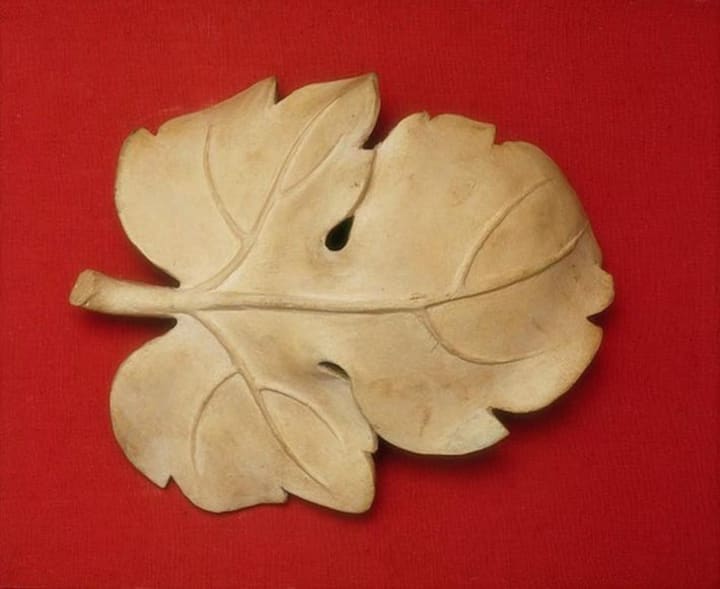
The coverup choice was a fig leaf and not a birch leaf or chestnut or mighty oak. Why?
Because the Garden of Eden had abundant fig trees. Scholars believe that the Garden of Eden was set in modern-day Iran.
Artworks that fell victim to this campaign
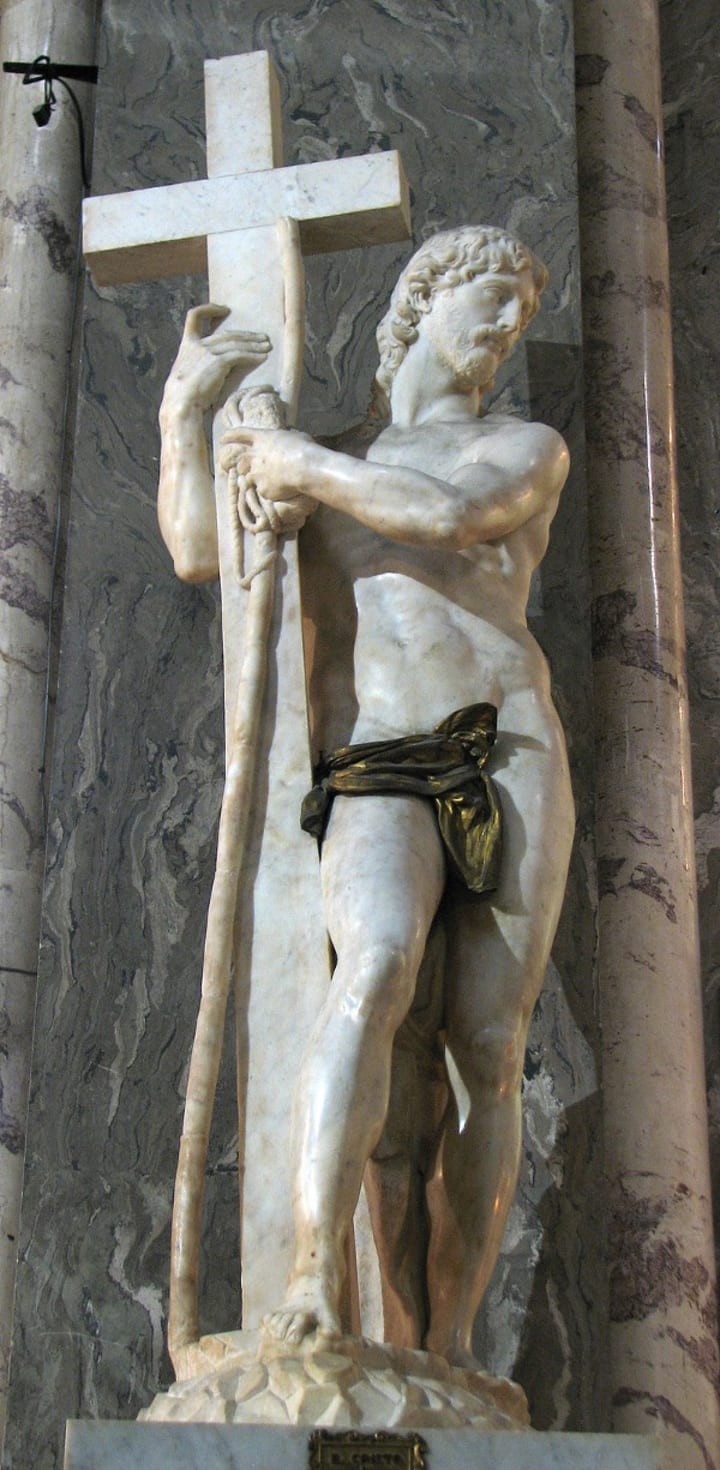
Michelangelo's David is the most popular sculpture to be censored for nudity as per the church's propaganda.
Michelangelo's Christ The Redemer in Santa Maria Sopra Minerva, Rome also came under the papal authority and a permanent bronze girdle was placed which could never be removed. This was done after the statue became a victim of vandalization.
In some cases, the plaster and marble phalluses were even chiseled off.
Art historian Leo Steinberg pointed out in his 1983 book The Sexuality of Christ in Renaissance Art and in Modern Oblivion that many beautiful antique statues were castrated in Rome by the order of Pope Paul IV.
The campaign didn't spare paintings, either. Areas of Michelangelo's Last Judgement deemed unethical were painted over twice in the 1500s, and then again in the 1700s, with little swaddles and loincloths added.
A Mannerist artist named Daniele da Volterra was charged with modifying Michelangelo's frescos, which won him the derogatory nickname of "The Breeches Maker".
The trend took in radar Masaccio's paintings too. In the 1600s, an unknown artist covered his fresco The Expulsion with fig leaves.
And in between 1758 and 1759, Pope Clement XIII swathed even more sculptures in the Vatican's collection with fig leaves.
The fig leaf phenomenon spread beyond Italy's borders, too.
When the Grand Duke of Tuscany gifted a cast of Michelangelo's David to Queen Victoria in 1857, a large leaf was promptly sculpted to censor nudity, according to the Victoria and Albert Museum (V&A).
Fortunately, a detachable fig leaf was created so that it could hang over the figure without damaging it. Today, the sculpture stands completely nude in the V&A, while a small vitrine next to it houses the large fig leaf.
Bernini's ingenious twist to the fig leaf campaign
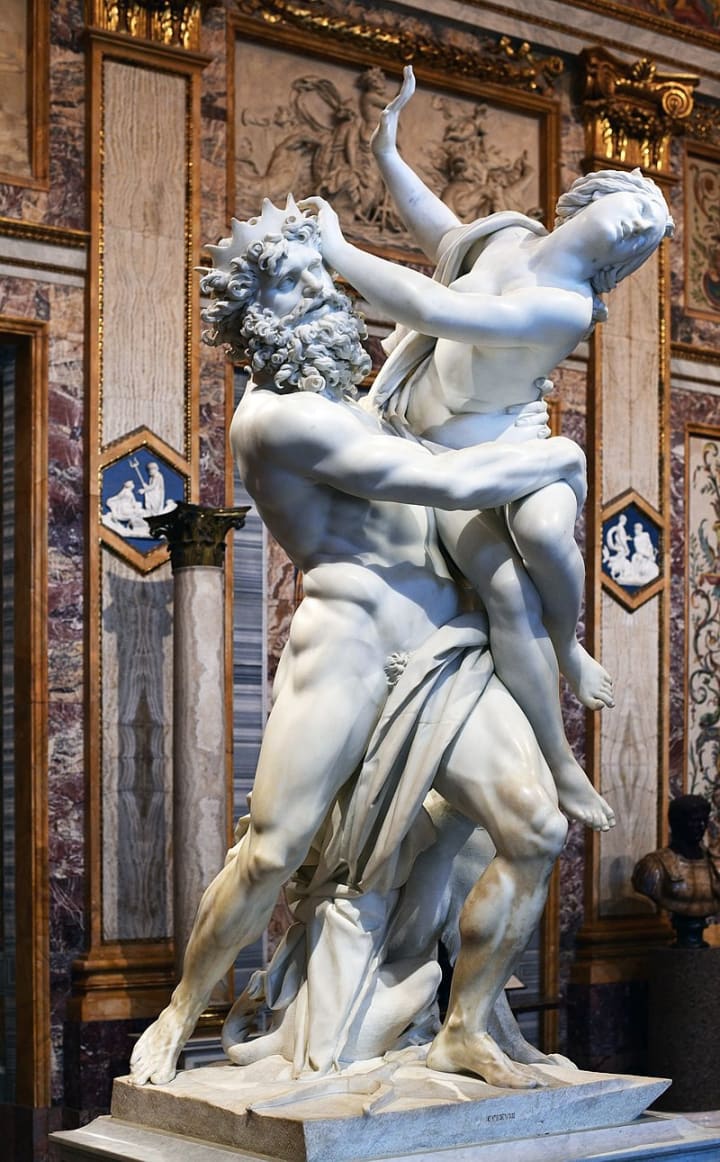
As we traverse 17th-century art, painters like Lorenzo Bernini gave an ingenious and eroticized twist to the fig leaf. Bernini understood that the more we cover things up, the more we want to know what's underneath.
So, he dexterously created the famous marble sculpture - The Rape of Proserpina. The sculpture portrays "no nudity" and exudes a slipping drape effect conveying the message of the abduction of Proserpina who was seized and taken to the underworld by Pluto.
Final thoughts
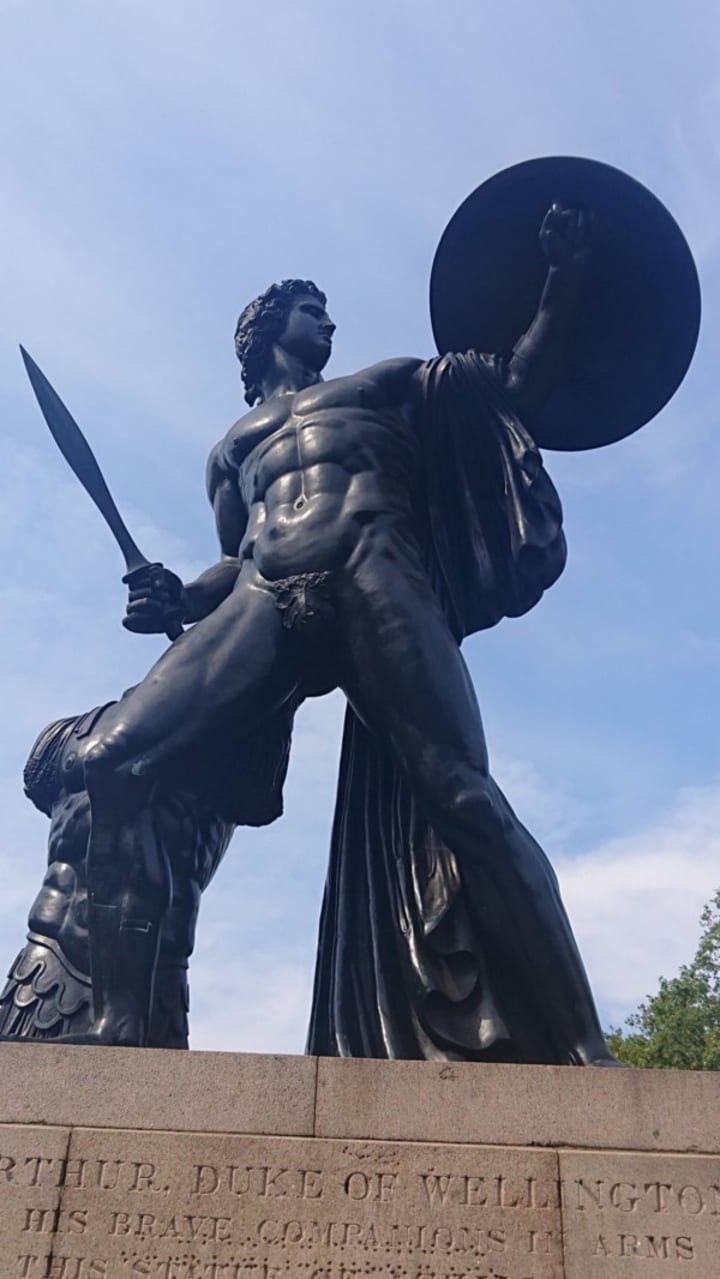
Achilles in Hyde Park is covered with a fig leaf. Source-Public DomainIn 19th century art, the 18ft statue of Achilles, the Greek hero of the Trojan War was unveiled at the Hyde Park Corner on 18th June 1822.
The statue was made by Sir Richard Westmacott using 33 tonnes of bronze from cannons captured in Wellington's campaigns in France. Originally, the statue was completely nude. But soon it caused outrage and so a small fig leaf had to be added soon after it was installed.
Over the last 40 years, a few of the paintings have been restored but still, nudity is considered taboo in the Catholic Church.
The fig leaves linger on at unexpected places.
Unarguably, the fig leaf campaign is the biggest coverup in history to censor art and nudity.
References-
About the Creator
Kamna Kirti
Art enthusiast. I engage with art at a deep level. I also share insights about entrepreneurship, founders & nascent technologies.
https://linktr.ee/kamnakirti



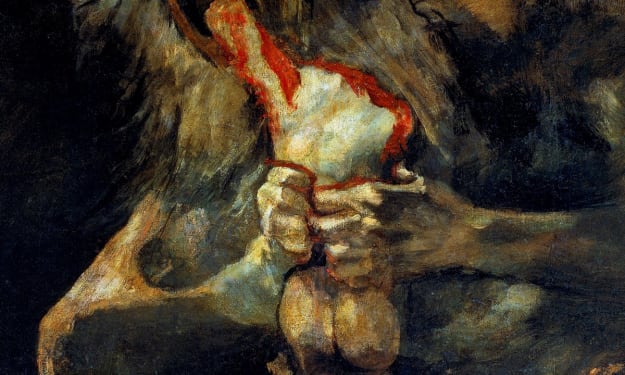



Comments
There are no comments for this story
Be the first to respond and start the conversation.